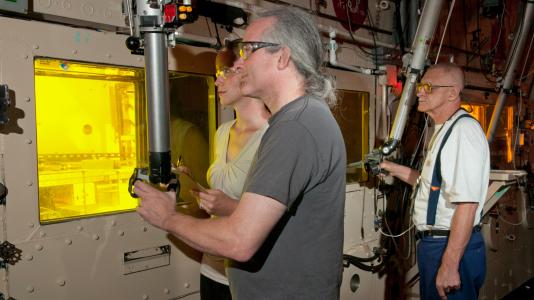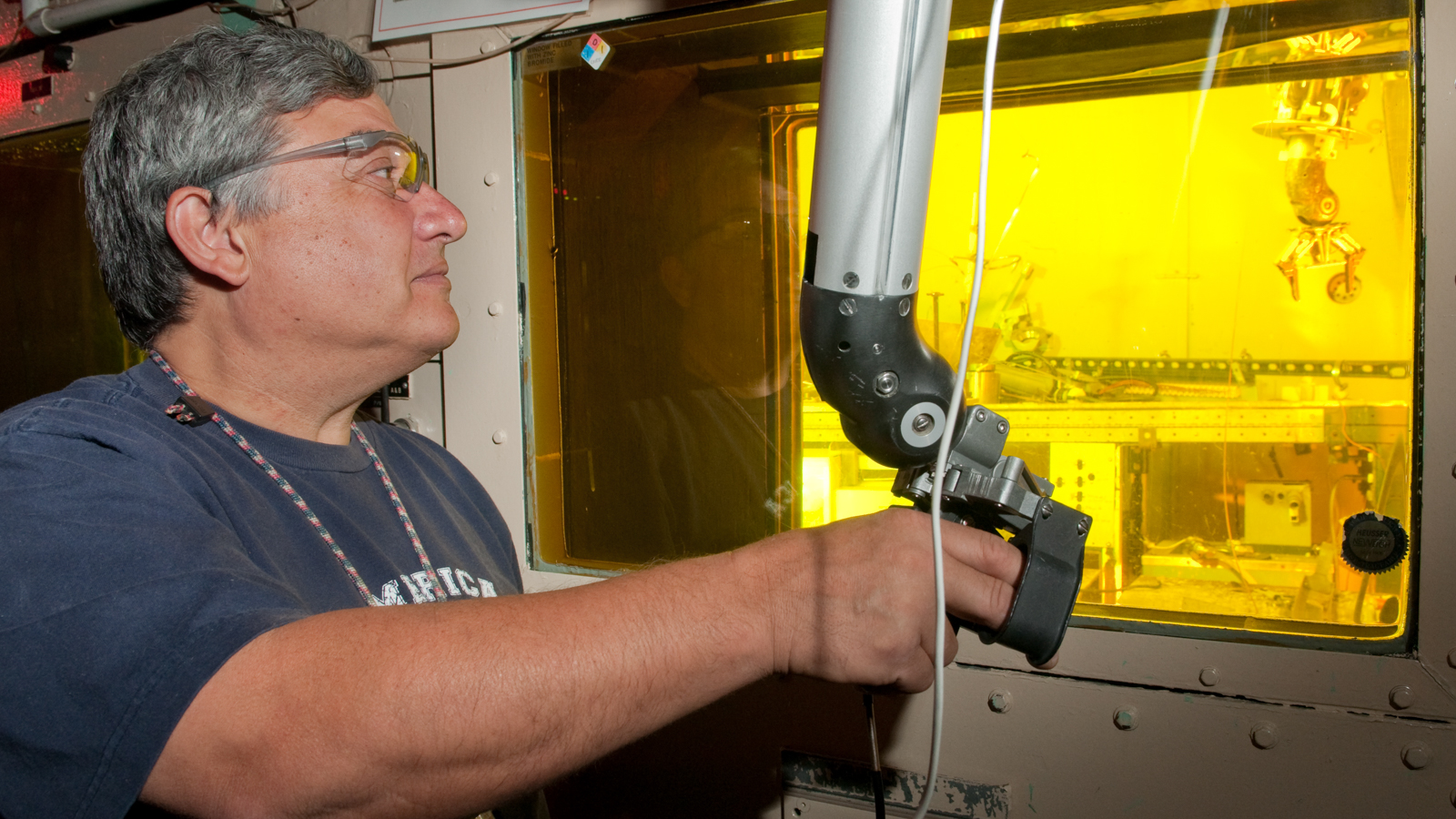
In December 2008, when the laboratory kicked off the plans to remove legacy nuclear material, Building 205’s K-Wing was considered a “Nuclear Hazard Category 2” facility, meaning that it contained a significant amount of nuclear material.
The building, which was once used for fuel experiments, was recently reclassified as a “radiological facility” after the removal of 36 55-gallon drums of irradiated test material.
“This is a significant milestone for the laboratory’s environmental stewardship effort,” said Argonne Director Eric Isaacs. “It’s important to clean up our past and make this facility available for more scientific and engineering research to ensure the nation’s energy future.”
Argonne began removing transuranic waste, so called because it originates from elements heavier than uranium, from the site in October 2009 as part of the Next Phase TRU Waste Campaign.
The American Recovery and Reinvestment Act (ARRA) supplied $1.7 million for this project, nearly 60 percent of the project’s total funding.
Project manager Devin Hodge said most of the irradiated and contaminated material removed from Building 205 K-Wing was remote-handled transuranic waste and had to be packaged with the help of robotic arms. Such projects are both time-consuming and expensive; it took 22 full-time personnel to finish the job.
Hodge said the building’s new classification will help the laboratory save money because facilities containing significant quantities of nuclear material are more costly to monitor and maintain.
“It’s expensive to run this building wing as a nuclear facility,” Hodge said. “It’s now much cleaner and could be available for future use when clean-up work is finished in March of 2011.”
Hodge explained that all of the drums have been transferred to Argonne’s waste management facility, where they are awaiting final approval to ship to the DOE’s Waste Isolation Pilot Plant outside Carlsbad, NM. The packages will be moved off site beginning in August and continuing through November 2010.
The project is on time and on budget.
Joanna Livengood, manager of the DOE’s Argonne Site Office, said the laboratory worked closely with DOE and with the national transuranic waste program to clean up the hot cell and dispose of the waste it housed.
“Achieving this deactivation milestone fulfills an important commitment to both the DOE Office of Science and the Office of Environmental Management,” she said.

